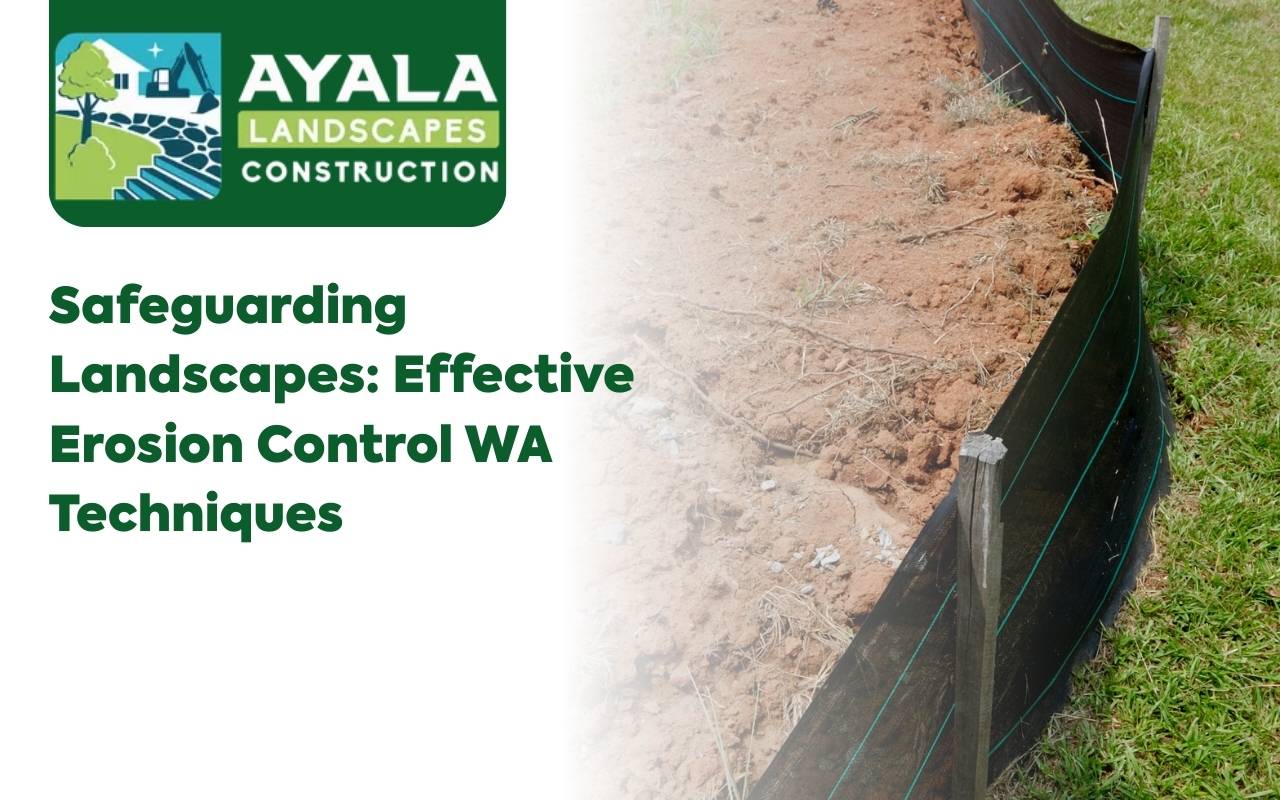
Western Australia’s landscapes are stunning, yet erosion poses a constant threat. Soil loss harms biodiversity, agriculture, and water systems. Fortunately, effective erosion control WA strategies protect soils and support long-term resilience. Even a raindrop can change landscapes. Over time, rainfall shapes gullies, threatening stability. By using vegetation, engineering, and community engagement, we strengthen landscapes instead of losing them. Let’s explore how erosion control WA safeguards Western Australia’s beauty for generations.
Understanding the Impact of Erosion in Western Australia
WA landscapes face erosion from wind, runoff, and human activity. Loss of topsoil reduces fertility and weakens vegetation cover. This leads to habitat loss, sedimentation in rivers, and higher flooding risks. Communities and ecosystems suffer. Nutrients wash into waterways, creating harmful effects for aquatic life. Local farmers also lose vital resources. Therefore, erosion control WA is essential to protect regional resilience and ensure land productivity.
- Topsoil loss reduces crop productivity
- Waterways face sedimentation and nutrient overload
- Communities experience flooding and soil degradation
Importance of Effective Erosion Control Techniques
Erosion control WA methods are vital for sustainable land care. They maintain soil structure, improve water quality, and preserve biodiversity. Governments and conservation groups recognize that reactive fixes are not enough. Instead, integrated strategies combining vegetation, engineering, and community participation are required. With proactive planning, WA can protect soils for future generations. Effective erosion control also saves costs tied to land damage and supports ecosystem services.
- Preserve soil stability and structure
- Reduce runoff and sediment transport
- Maintain ecosystem services and biodiversity
For tailored solutions, explore our landscaping services for soil and water protection.
Vegetation-Based Solutions for Erosion Control
Vegetation is a natural shield. Roots stabilize soil, while foliage reduces raindrop impact. Deep-rooted native plants thrive in WA climates. They hold slopes, embankments, and dunes in place. Combining grasses, shrubs, and trees creates multilayered protection. Cover crops during off-seasons prevent bare soil exposure. Choosing native species ensures sustainability and lower maintenance. Vegetation-based erosion control WA strengthens ecosystems while lowering costs.
Engineering Approaches to Combat Erosion
When vegetation alone is insufficient, engineered structures help. Check dams, rock gabions, and contour banks slow water movement. Drainage channels manage runoff safely, avoiding gullies and rills. In coastal areas, revetments and sand fences defend dunes from storms. Modern approaches mix engineering with bioengineering. Geotextiles or coir logs stabilize soil while plants establish. These hybrid designs integrate strength with ecological restoration. Customized engineering ensures erosion control WA adapts to diverse conditions.
- Check dams slow down flowing water
- Drainage systems channel runoff safely
- Hybrid solutions blend structure with nature
Learn more about durable support with our retaining wall services that strengthen landscapes.
Role of Natural Barriers in Erosion Prevention
Natural barriers reduce soil loss cost-effectively. Hedgerows, riparian strips, and windbreaks slow erosion forces. Buffer zones filter runoff and protect waterways. Coastal seagrass and saltmarshes act as underwater barriers. These features provide erosion control WA benefits while supporting biodiversity. By restoring natural defenses, communities reduce reliance on heavy engineering.
Implementing Sustainable Land Management Practices
Sustainable land practices protect soil long-term. Conservation tillage, contour farming, and rotational grazing maintain cover and structure. Cover crops recycle nutrients and prevent bare soil. Agroforestry combines crops and trees for multiple benefits. Integrated pest management reduces chemical inputs and improves soil health. These approaches align productivity with stewardship. Sustainable erosion control WA balances economy with ecology, keeping land resilient.
For expert support, consider our concrete work services that complement sustainable land care.
Community Engagement for Successful Erosion Control
Communities drive erosion control WA success. Collaboration with landholders, Indigenous groups, and governments builds shared responsibility. Workshops and demonstration sites promote learning. Citizen science projects empower volunteers to monitor soil and water. Education campaigns raise awareness about hidden erosion costs. Collective action ensures projects thrive long-term, embedding stewardship into everyday land management decisions.
FAQs About Erosion Control WA
Why is erosion control important in WA?
WA’s landscapes face constant threats from erosion. Control measures protect soil, ecosystems, and communities from lasting damage.
What are common erosion control methods?
Vegetation plantings, engineered structures, and natural barriers are the most effective erosion control WA methods.
How does vegetation help prevent erosion?
Roots stabilize soil, while foliage shields surfaces from rainfall, reducing runoff and soil displacement.
What role do communities play in erosion control?
Community groups plant, monitor, and maintain erosion control projects, ensuring long-term success across WA landscapes.
Can I get professional help with erosion control?
Yes, experts offer tailored solutions. Contact our team today for professional erosion control support.
Monitoring and Evaluation of Erosion Control Measures
Monitoring ensures methods remain effective. Baseline studies guide strategies, while inspections track results. Drone surveys and soil tests provide data. Evaluations consider ecological and social impacts. Sharing findings strengthens erosion control WA practices across the region.
Case Studies: Successful Erosion Control Projects in WA
Case studies show proven success. Creek banks stabilized with swales and native plants reduced sediment by 70%. In the Wheatbelt, contour farming and windbreaks improved yields by 15%. Coastal dune projects mixing geotextiles and native grasses resisted storms. These examples prove erosion control WA delivers lasting results when tailored to site conditions.
Ensuring a Sustainable Future for Western Australia’s Landscapes
Sustainable erosion control WA requires integrated strategies. Vegetation, engineering, and community efforts ensure resilience. Continuous monitoring adapts methods to future challenges. Protecting soil safeguards economies, ecosystems, and cultural heritage. Together, we can preserve Western Australia’s landscapes for generations.
